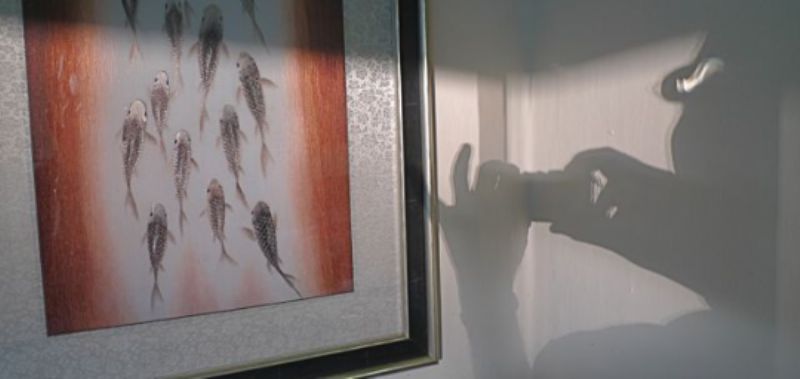An uplifting piece from my friend Rajni Bakshi appears on openDemocracy, here, arguing that we should not allow the events of 9/11 2001 to dictate the way we thing either about that date in the annual calendar or the wider world.
Setting Sun Illuminates Our Fish
Got back to 2 Bloomsbury Place from the FDSD meeting to find the setting sun illuminating the embroidered picture of counter current fish that (Zheng) Jieying gave me earlier in the year, based on the theme of this website. The extraordinary threadwork spotlighted for all to see.
FDSD Channels Future Generations
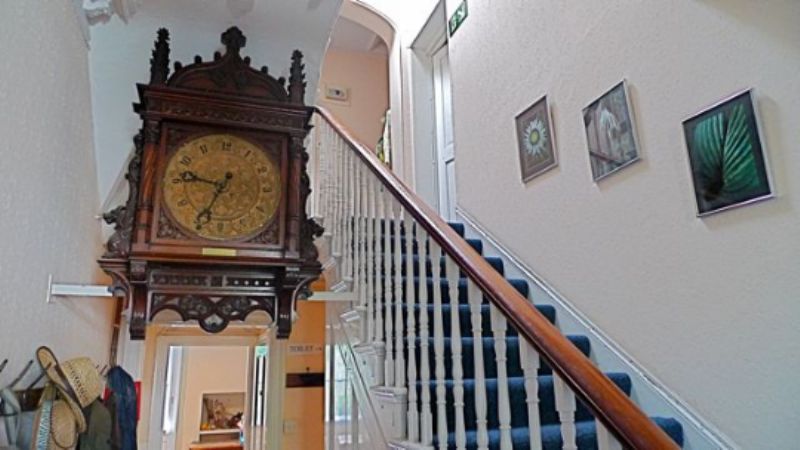 Inside the South London Botanical Institute
Inside the South London Botanical Institute 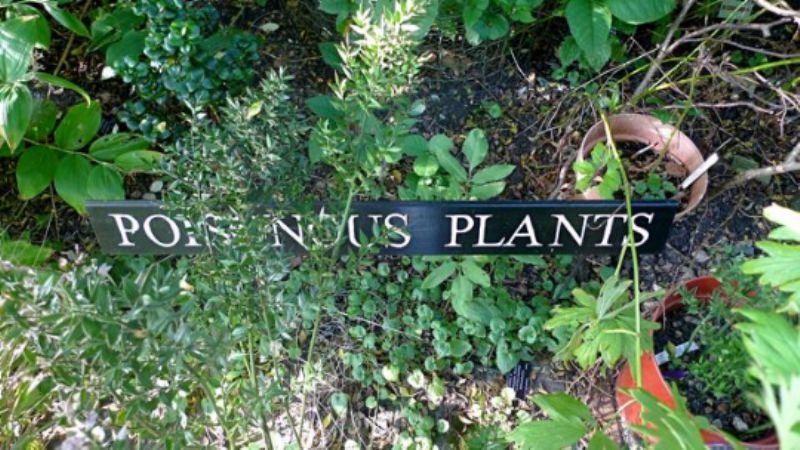 Garden 1
Garden 1 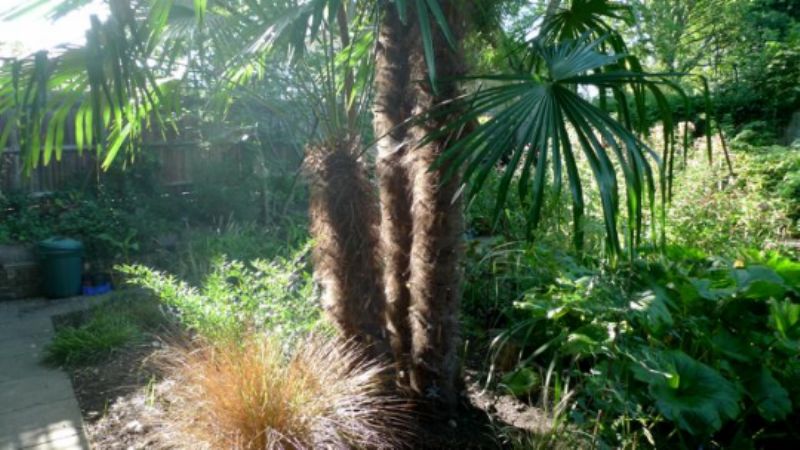 Garden 2
Garden 2 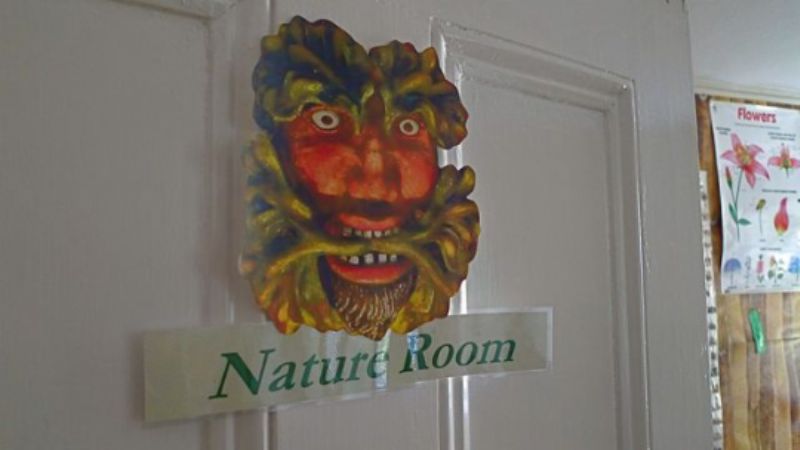 Nature Room
Nature Room 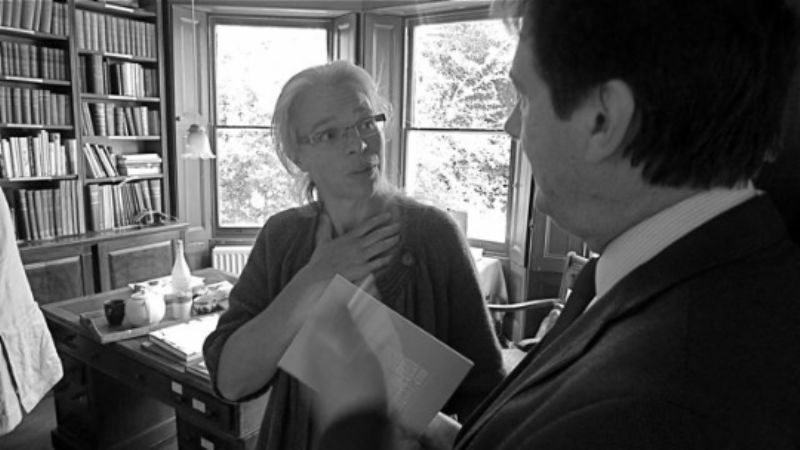 Halina and Ian
Halina and Ian
Took a minicab across to Tulse Hill this morning, with a driver who had been one of Vietnam’s Boat People. He was part of a group of people trying to leave the country in 1979, but they got into difficulties and split up at the quay, so he was the only one of his family group that got onto the boats. The rest of his family apparently ended up in re-education camps for two years. Like the Afghani driver who drove me across to Volans with a set of pictures a couple of weeks ago, a man who had fought alongside the Russians, my Vietnamese driver says he was very well treated by the British immigration authorities when he got here.
Finding the South East Botanical Institute proved a little mystifying, but the driver stuck with the task – and the morning was beautiful. I was on my way to chair a meeting of the Trustees of the Foundation for Democracy and Sustainable Development (FDSD), but had sadly missed the first half day yesterday, because of my last-moment trip to Vevey. Luckily, Ian Christie, as Deputy Chair, has stepped in.
As a result of my Vevey jaunt, I had missed two outbound Trustees, Tim O’Donovan (who had been with the Environment Foundation since the get-go) and Jane Nelson (who had joined alongside Sir Geoffrey Chandler when I took over as Chairman, deep in the mists of pre-history). Dr Malcolm Aickin (another Trustee who had been there from the beginning, indeed from before that) did make it today, though he has also stood down as a Trustee, in line with our rules on tenure.
One highlight of the day was that Professor Janos Zlinsky, Head of Strategy for Hungary’s Parliamentary Commissioner for Future Generations, joined us as the first of what we intend will be a new crop of (more international) Trustees – and, as a result, we spent quite a bit of the time debating the different ways in which governments have been trying to ensure that the voices of future generations are heard (or at least their potential needs considered) in today’s politics and decision-making.
The Library at the Institute dates back to 1910 – and the smell of old books, the dark, heavy wooden furniture, the book-crowded walls and the pendulant frilly glass lights put me in mind of spiritualism sessions in the aftermath of WWI, enhanced by the fact that one or two of the Trustees greeted certain decisions by rapping on the table-top, in the continental style of applause.
Was fascinated to discover that the Institute was founded by Allan Octavian Hume, whose extraordinary story I hadn’t previously come across directly. But I had bought some time ago a book, The Great Hedge of India, that described Hume’s role in the creation of one of the most extraordinary features of the British Raj, the living customs line designed to enforce the invidious salt tax. How extraordinary, then, that Hume – who was eventually dismissed from the Civil Service because he was too independent and honest, became one of the founders of the Indian Congress Party, and was even featured on an Indian postal stamp.
Hume also turns out to have been a champion of using firewood plantations to allow manure to go back to the land, of women’s rights, of an end to infanticide and enforced widowhood, and – in the immediate aftermath of what some call the Indian Mutiny and others the Indian Rebellion or the first War of Independence – of the merciful treatment of Indians at a time when the British were struggling to get back into the saddle, and were generally looking for revenge.
In addition to Hume’s passion for plants, that crystallised out in the Institute, he was profoundly knowledgeable about birds. His first collection was apparently destroyed during the terrors of 1857, then a later collection of books and samples was destroyed when a servant sold it as waste paper. In a third round of destruction, a further 20,000 samples were destroyed before the remnant of his vast ornithological collection made its way to the British Museum, just along the road from where Volans now roosts.
Given that groups of schoolchildren visit the Institute, there is a nice future generations line of sight back to the values and work of Hume. Also nice to see a Ginkgo biloba in the front garden, planted by a former Curator, William Sherrin (1871-1955)one of my favourite trees. One other highlight of the day was filming an interview by Ian of Janos, using the Flip camera the team gave me last year for my sixtieth birthday. The quality of the images is stunning – though the size of the resulting file is enormous, and I still have to work out how to transfer easily to Halina to post on the FDSD website.
A Day in Vevey
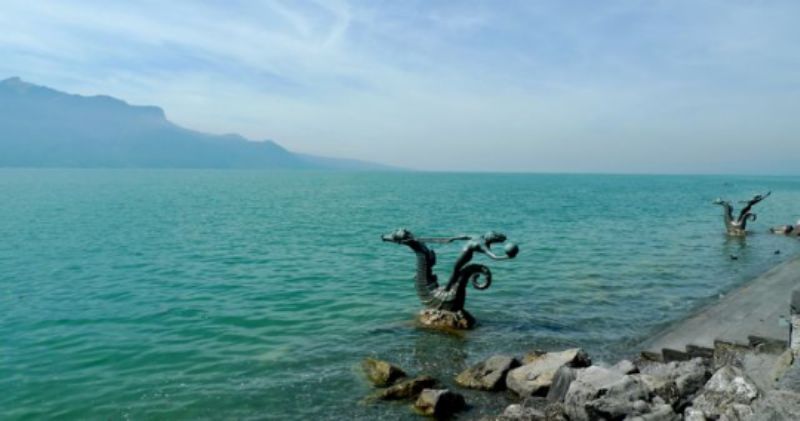 Seahorses in Lake Geneva/Lac Léman
Seahorses in Lake Geneva/Lac Léman  Skateboarder goes horizontal
Skateboarder goes horizontal  Lac Léman 2
Lac Léman 2  Lac Léman 3
Lac Léman 3 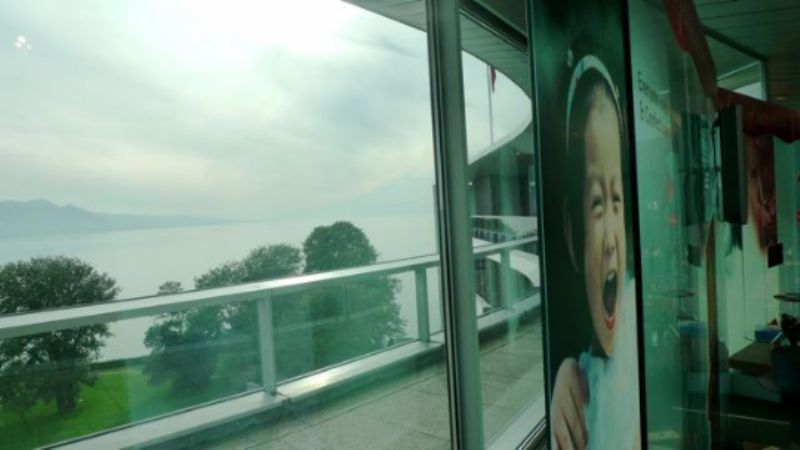 Inside-out view from Nestlé
Inside-out view from Nestlé  I prefer to bite them rather than sit on them
I prefer to bite them rather than sit on them 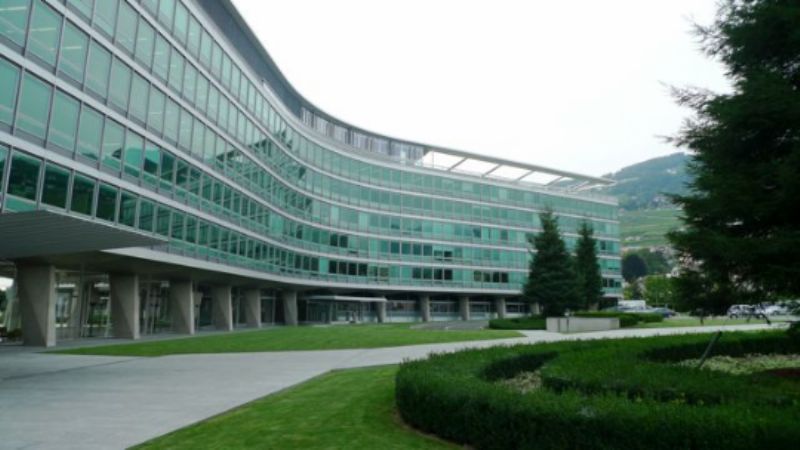 Not quite full frontal
Not quite full frontal
By plane and train this morning to Vevey in Switzerland, to see Nestlé. Spent several hours discussing the sustainability agenda with José Lopez (Executive Vice President, Operations), Niels Christensen and Claus Conzelmann of Nestlé, and Ismail Serageldin, Director of the Library of Alexandria and another member of the Nestlé Creative Shared Value Advisory Board.
Holy Island, Bamburgh and Stormy Environs
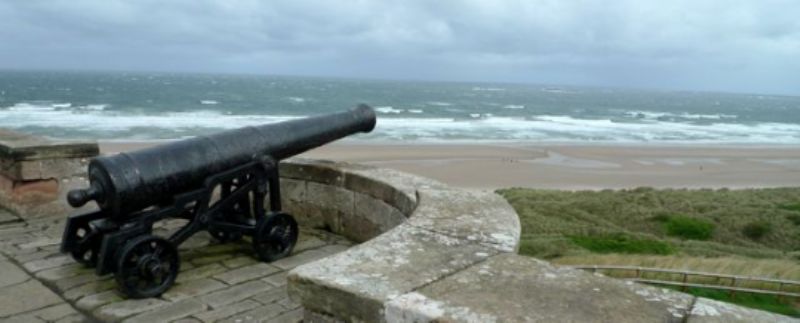 Endless, rusting vigil
Endless, rusting vigil 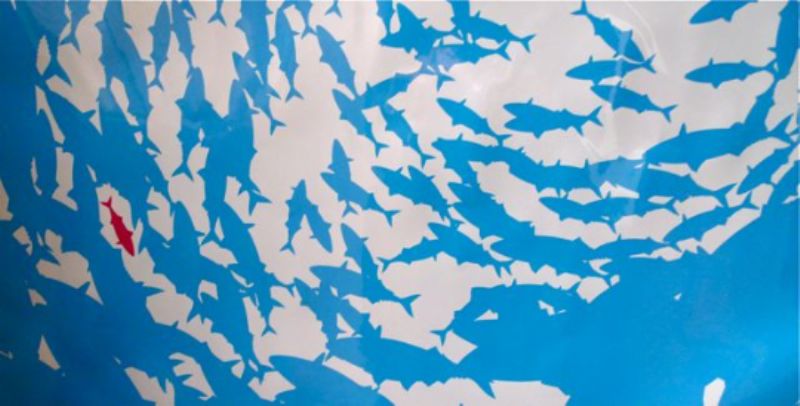 Migration 8 (detail)
Migration 8 (detail) 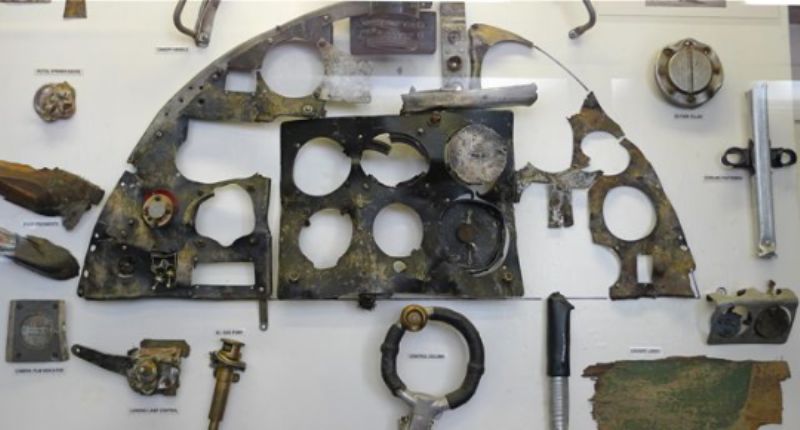 Hurricane control panel (altimeter top right in 6-hole middle frame)
Hurricane control panel (altimeter top right in 6-hole middle frame)  Hurricane canopy (left) found in garden being used as cloche
Hurricane canopy (left) found in garden being used as cloche  Keep
Keep  Bamburgh shoreline
Bamburgh shoreline 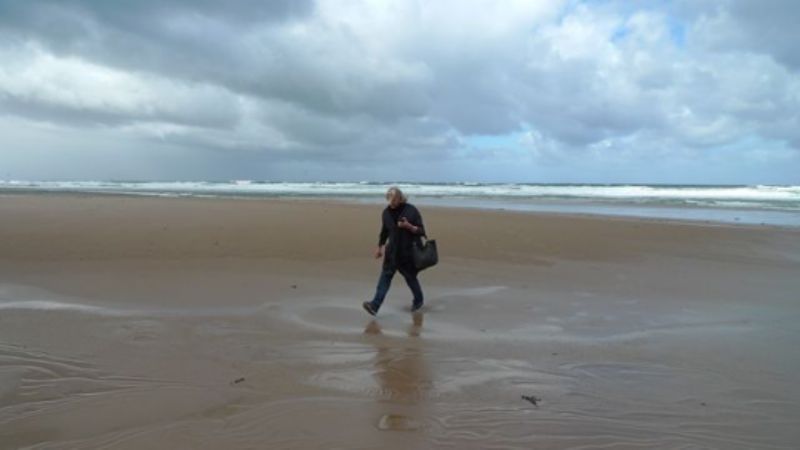 Elaine 1
Elaine 1 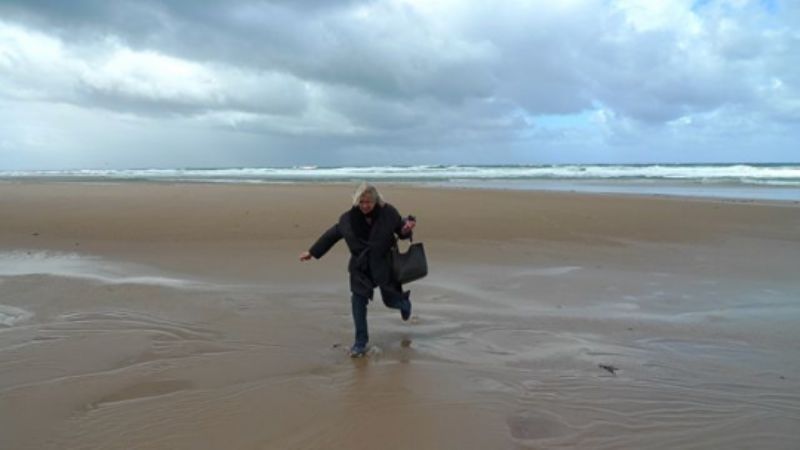 Elaine 2
Elaine 2  Elaine 3
Elaine 3 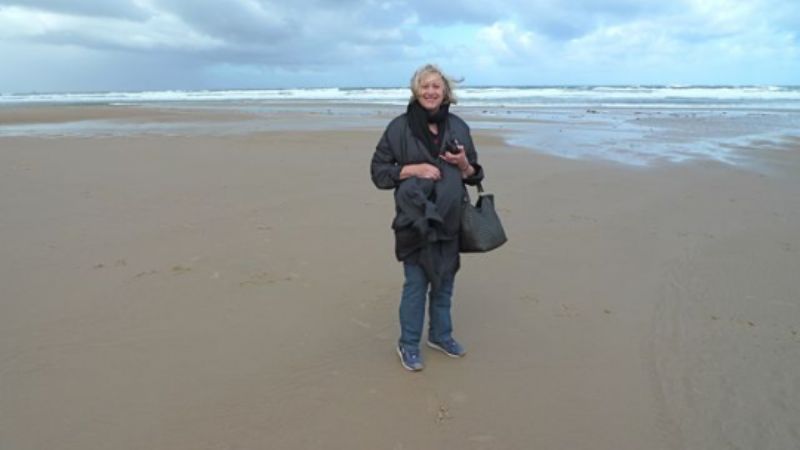 Elaine 4
Elaine 4
Drove across to Holy Island this morning, ploughing through a water-covered causeway, only to arrive in the midst of a downpour – and then decided that a walk in inadequate clothing would lead to death by exposure, deciding to head south to Bamburgh Castle. Somewhat disappointed by the museum element of the Castle, but delighted by being almost borne aloft – indeed almost to Kansas – by thumping winds. My glasses torn from my head.
Stumbled across a print by local artist Peter Phillips that shows a red fish against a field of blue fish moving in the opposite direction. So reminded me of the ‘counter current’ theme of this website, that I bought a copy.
Then we went into the exhibition of bits of aircraft and other elements of sundry warmongery. Had heard that they had a Hurricane canopy, shown in one of the photographs above, but hadn’t realised that it had been found being used as a cloche in a local garden. Was fascinated to see remnants of a Hurricane control panel, still containing an altimeter – I have the equivalent from my father Tim’s Hurricane, shot down over West Wittering in 1940.
Then a wonderful walk along the seashore, with sand whipping off the dunes, into our mouths, eyes and ears. Great skeins of sand being blown across the beach. Distant Lindisfarne picked out by fitful sun – as were nearby lighthouses and other structures on the Farne Islands.

